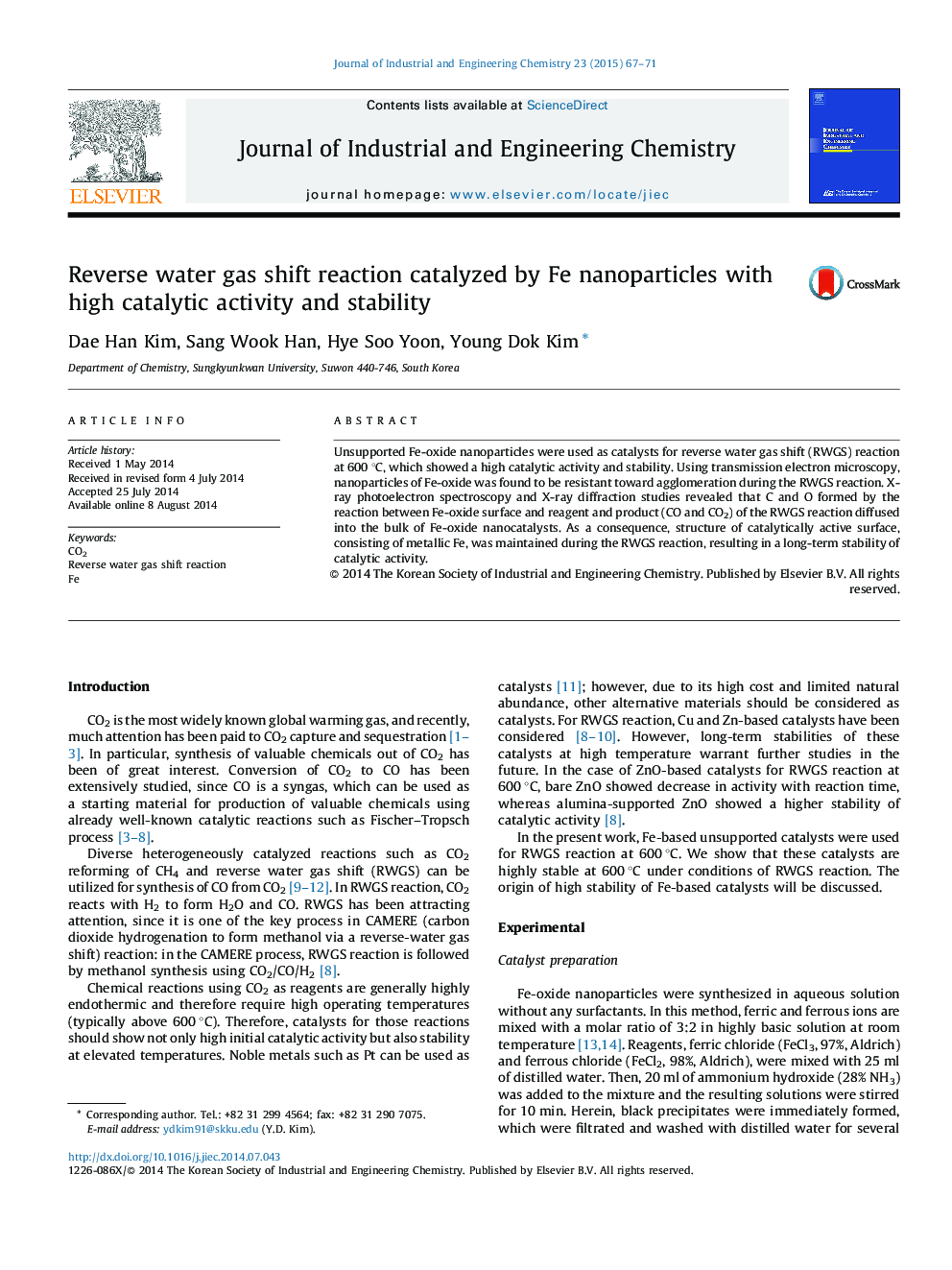| Article ID | Journal | Published Year | Pages | File Type |
|---|---|---|---|---|
| 226785 | Journal of Industrial and Engineering Chemistry | 2015 | 5 Pages |
Unsupported Fe-oxide nanoparticles were used as catalysts for reverse water gas shift (RWGS) reaction at 600 °C, which showed a high catalytic activity and stability. Using transmission electron microscopy, nanoparticles of Fe-oxide was found to be resistant toward agglomeration during the RWGS reaction. X-ray photoelectron spectroscopy and X-ray diffraction studies revealed that C and O formed by the reaction between Fe-oxide surface and reagent and product (CO and CO2) of the RWGS reaction diffused into the bulk of Fe-oxide nanocatalysts. As a consequence, structure of catalytically active surface, consisting of metallic Fe, was maintained during the RWGS reaction, resulting in a long-term stability of catalytic activity.
Graphical abstractFigure optionsDownload full-size imageDownload as PowerPoint slide
